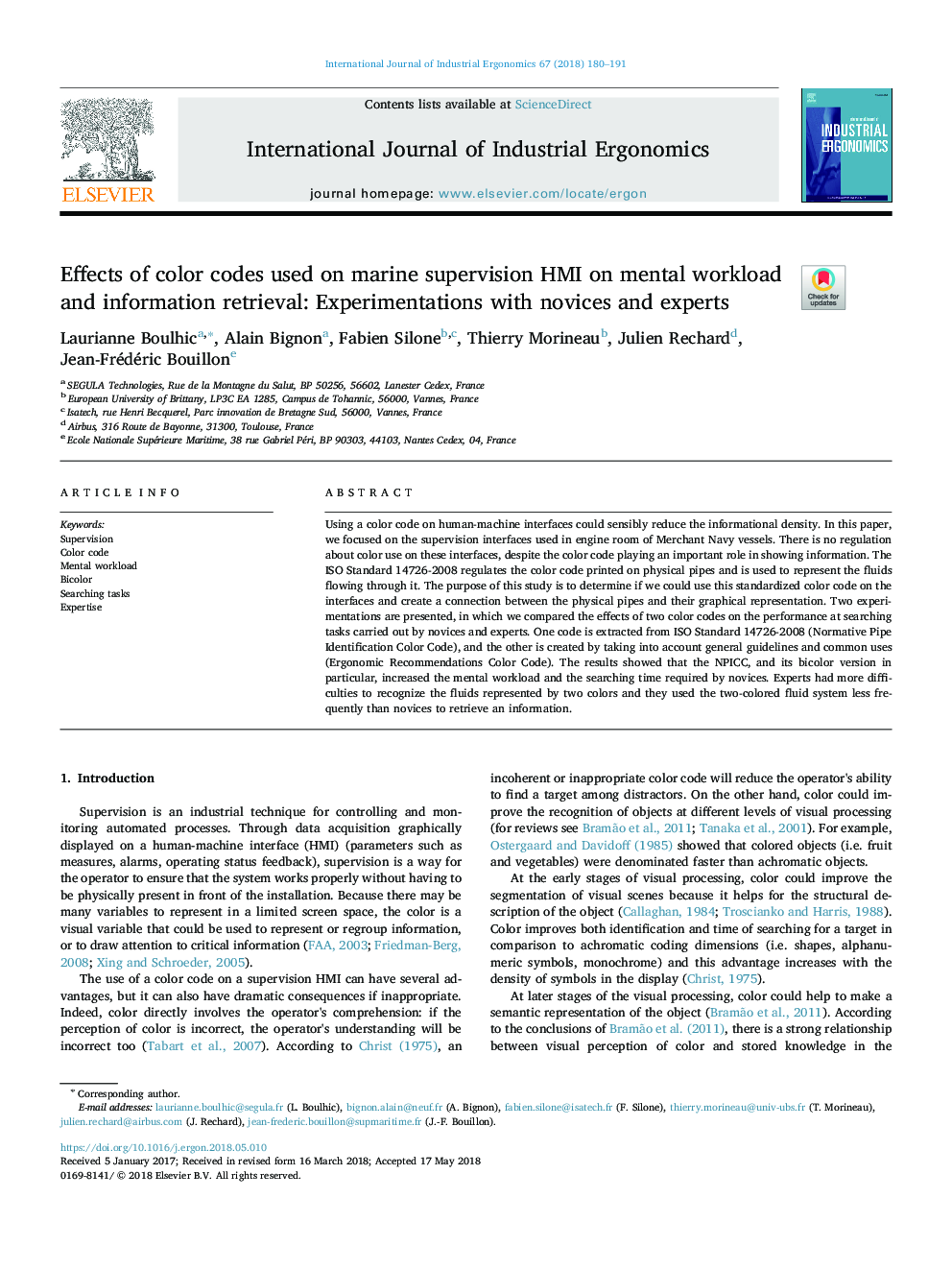| Article ID | Journal | Published Year | Pages | File Type |
|---|---|---|---|---|
| 7530390 | International Journal of Industrial Ergonomics | 2018 | 12 Pages |
Abstract
Using a color code on human-machine interfaces could sensibly reduce the informational density. In this paper, we focused on the supervision interfaces used in engine room of Merchant Navy vessels. There is no regulation about color use on these interfaces, despite the color code playing an important role in showing information. The ISO Standard 14726-2008 regulates the color code printed on physical pipes and is used to represent the fluids flowing through it. The purpose of this study is to determine if we could use this standardized color code on the interfaces and create a connection between the physical pipes and their graphical representation. Two experimentations are presented, in which we compared the effects of two color codes on the performance at searching tasks carried out by novices and experts. One code is extracted from ISO Standard 14726-2008 (Normative Pipe Identification Color Code), and the other is created by taking into account general guidelines and common uses (Ergonomic Recommendations Color Code). The results showed that the NPICC, and its bicolor version in particular, increased the mental workload and the searching time required by novices. Experts had more difficulties to recognize the fluids represented by two colors and they used the two-colored fluid system less frequently than novices to retrieve an information.
Related Topics
Physical Sciences and Engineering
Engineering
Industrial and Manufacturing Engineering
Authors
Laurianne Boulhic, Alain Bignon, Fabien Silone, Thierry Morineau, Julien Rechard, Jean-Frédéric Bouillon,
